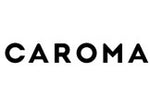What tile material is best for my project?
Ceramic Tiles have been used for thousands of years, are durable, easy to maintain and eco-friendly. Ceramic tiles are usually more lightweight and affordable than porcelain tiles making them ideal for indoor, residential applications.
Porcelain Tiles are made using finer materials and are fired at higher temperatures. This makes them very durable, dense and water resistant. Porcelain tiles are ideal in high-traffic commercial and outdoor residental areas as they offer greater durability and wear resistance.
Natural Stone Tiles are not man-made and therefore offer a unique appearance that varies from tile to tile. Natural Stone Tiles are beautiful and durable but often require more maintenance (like sealing and using non-abrasive clearners) and consideration than ceramic or porcelain tiles. It is important that you research and understand the specific stone's characteristics and suitability for your project and some stones are more porous and susceptible to staining than others.
What does vitrified mean?
Vitrification is a process of heating something to meld it together and reduce it's porosity, thereby improving it's water and grime resistance. Tiles are available in Vitrified, Semi-Vitrified and Highly Vitrified states.
Semi-Vitrified tiles have a water absorption rate between 3% and <6%. They are suitable for dry areas like walls.
Vitrified tiles have a water absorption rate between 0.5% and <3%. They are ideal for low-traffic areas like bedrooms.
Highly Vitrified (Porcelain) tiles have a water absorption rate of <0.5%. They are the most durable and perfect for high-traffic areas, wet areas and outdoor spaces.













